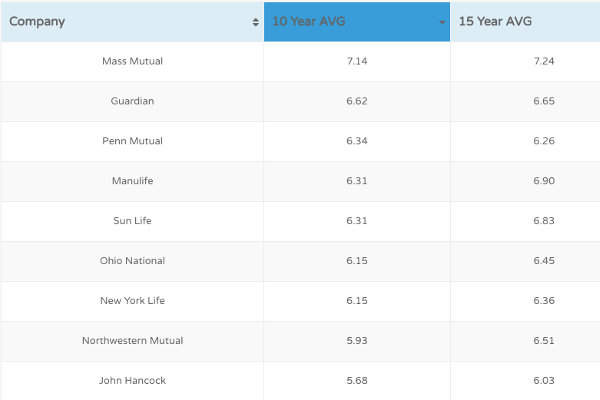When it comes to securing your financial future and providing long-term protection for your loved ones, permanent life insurance can be an excellent option. Unlike term life insurance, which provides coverage for a specific period, permanent life insurance offers lifelong protection and additional benefits such as cash value accumulation. However, there are different types of permanent life insurance policies available, each with its own features and advantages. In this blog post, we will explore the various types of permanent life insurance and help you determine which one is right for you.
1. Whole Life Insurance:
Whole life insurance is the most common and well-known type of permanent life insurance. It offers guaranteed death benefit protection, guaranteed cash value accumulation, and guaranteed level premiums. With whole life insurance, your premiums remain the same throughout the life of the policy, providing stability and predictability. Additionally, whole life policies may pay dividends, which can be used to increase the cash value or reduce premiums.
2. Universal Life Insurance:
Universal life insurance is another popular form of permanent life insurance. It provides flexibility in premium payments and death benefit amounts. With universal life insurance, you have the ability to adjust your premiums and death benefit as your financial circumstances change. The policy's cash value can also grow based on the interest credited to it, which is typically tied to a specified interest rate or an index.
3. Guaranteed Universal Life Insurance:
Guaranteed universal life insurance (GUL) is a type of universal life insurance that focuses on providing a guaranteed death benefit. GUL policies offer lower premiums compared to whole life insurance and provide coverage for a specific period, typically up to age 90 or 121. GUL can be an attractive option for individuals who want lifelong coverage without the cash value component.
4. Indexed Universal Life Insurance:
Indexed universal life insurance (IUL) combines the flexibility of universal life insurance with the potential for cash value growth tied to the performance of a market index, such as the S&P 500. IUL policies offer a minimum guaranteed interest rate, ensuring that the cash value doesn't decline even if the index performs poorly. This type of policy allows policyholders to participate in market gains while providing downside protection.
Click below to get a Quote Now
Get Me A Quote 5. Variable Universal Life Insurance:
Variable universal life insurance (VUL) offers both death benefit protection and investment opportunities. With VUL, policyholders have the ability to allocate their premiums into various investment options, such as mutual funds. The cash value of the policy fluctuates based on the performance of the chosen investments. While VUL provides potential for higher returns, it also carries more investment risk compared to other types of permanent life insurance.
6. Survivorship Life Insurance:
Survivorship life insurance, also known as second-to-die life insurance, covers two individuals under a single policy and pays the death benefit after the death of the second insured. This type of policy is often used for estate planning purposes, as it can provide funds to pay estate taxes or leave a legacy for beneficiaries. Survivorship life insurance is typically less expensive than individual permanent life insurance policies.
Click below to get a Quote Now
Get Me A Quote
1. Whole Life Insurance:
Whole life insurance is the most common and well-known type of permanent life insurance. It offers guaranteed death benefit protection, guaranteed cash value accumulation, and guaranteed level premiums. With whole life insurance, your premiums remain the same throughout the life of the policy, providing stability and predictability. Additionally, whole life policies may pay dividends, which can be used to increase the cash value or reduce premiums.
2. Universal Life Insurance:
Universal life insurance is another popular form of permanent life insurance. It provides flexibility in premium payments and death benefit amounts. With universal life insurance, you have the ability to adjust your premiums and death benefit as your financial circumstances change. The policy's cash value can also grow based on the interest credited to it, which is typically tied to a specified interest rate or an index.
3. Guaranteed Universal Life Insurance:
Guaranteed universal life insurance (GUL) is a type of universal life insurance that focuses on providing a guaranteed death benefit. GUL policies offer lower premiums compared to whole life insurance and provide coverage for a specific period, typically up to age 90 or 121. GUL can be an attractive option for individuals who want lifelong coverage without the cash value component.
4. Indexed Universal Life Insurance:
Indexed universal life insurance (IUL) combines the flexibility of universal life insurance with the potential for cash value growth tied to the performance of a market index, such as the S&P 500. IUL policies offer a minimum guaranteed interest rate, ensuring that the cash value doesn't decline even if the index performs poorly. This type of policy allows policyholders to participate in market gains while providing downside protection.
Discover your fit. Choose the perfect permanent life insurance today.
Click below to get a Quote Now
Get Me A Quote 5. Variable Universal Life Insurance:
Variable universal life insurance (VUL) offers both death benefit protection and investment opportunities. With VUL, policyholders have the ability to allocate their premiums into various investment options, such as mutual funds. The cash value of the policy fluctuates based on the performance of the chosen investments. While VUL provides potential for higher returns, it also carries more investment risk compared to other types of permanent life insurance.
6. Survivorship Life Insurance:
Survivorship life insurance, also known as second-to-die life insurance, covers two individuals under a single policy and pays the death benefit after the death of the second insured. This type of policy is often used for estate planning purposes, as it can provide funds to pay estate taxes or leave a legacy for beneficiaries. Survivorship life insurance is typically less expensive than individual permanent life insurance policies.
Choosing the Right Permanent Life Insurance Policy:
Selecting the right permanent life insurance policy depends on your financial goals, risk tolerance, and personal circumstances. Consider the following factors when making your decision:- Coverage Needs: Evaluate your current and future financial obligations, such as mortgage payments, education expenses, and income replacement for your loved ones. Determine the appropriate death benefit amount that will adequately protect your family.
- Cash Value Accumulation: If building cash value is a priority, whole life insurance or indexed universal life insurance may be suitable options. These policies offer guaranteed cash value growth and potential for additional returns.
- Flexibility: If you prefer flexibility in premium payments and death benefit amounts, universal life insurance or variable universal life insurance may be more suitable. These policies allow you to adjust your coverage as your needs change.
- Risk Tolerance: Consider your comfort level with investment risk. If you are willing to assume investment risk for potentially higher returns, variable universal life insurance may be worth considering. However, if you prefer more stability, whole life insurance or guaranteed universal life insurance may be better options.
- Consult with an Expert: It's crucial to consult with a knowledgeable insurance professional who can assess your needs and guide you through the decision-making process. They can help you understand the nuances of each policy type and recommend the most suitable option for your situation.
Conclusion
Permanent life insurance provides lifelong protection and additional benefits such as cash value accumulation. Understanding the different types of permanent life insurance policies is essential in choosing the right one for your needs. Whether you opt for whole life insurance, universal life insurance, indexed universal life insurance, variable universal life insurance, or survivorship life insurance, each policy type offers unique features and advantages. Consider your financial goals, risk tolerance, and personal circumstances when making your decision, and consult with an insurance professional to ensure you make an informed choice. By selecting the right permanent life insurance policy, you can secure your financial future and provide peaceof mind for yourself and your loved ones.Discover your fit. Choose the perfect permanent life insurance today.
Click below to get a Quote Now
Get Me A Quote




